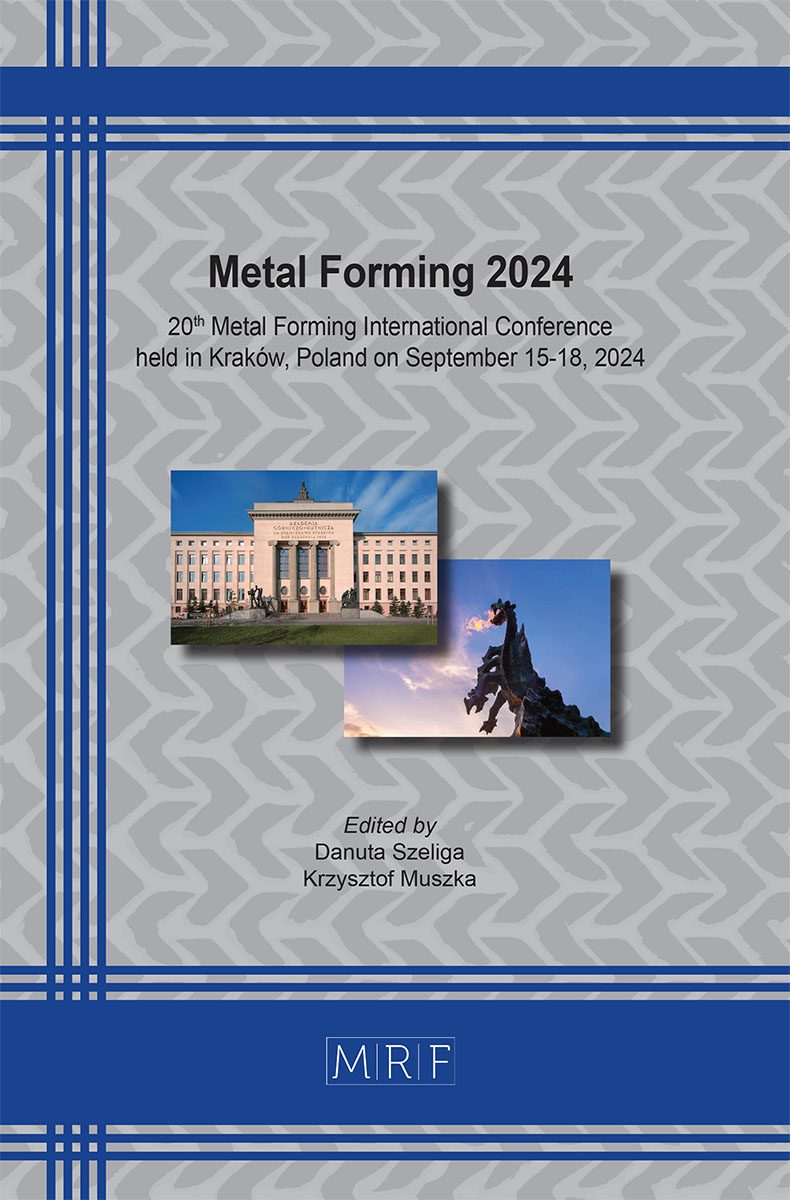–
Environmental impact assessment and comparative analysis of hot stamping and cold stamping processes: A cradle-to-gate lifecycle assessment study
BUCCONI Marco, KARKASINAS Aineias, LIU Jun, PARAMESWARAN Elangovan
download PDFAbstract. This manuscript presents the results of a cradle-to-gate lifecycle assessment (LCA) conducted on a component manufactured through two distinct process routes: Hot stamping of AA6082-T6 and cold stamping of AA5251-H22. The primary objective of this study is to provide a detailed understanding of the environmental impact associated with these processes and to conduct a comparative analysis of their environmental profiles. A comprehensive process map was developed for each manufacturing route, delineating all inputs and outputs at each step. Forming trials were executed during the LCA, capturing equipment energy consumption. When immediate data was unavailable from trials, the LCA model was supplemented with information from the Ecoinvent 3.6 database. The analysis demonstrates that the adoption of advanced near-net-shape manufacturing, specifically hot stamping, can significantly diminish the environmental impact compared to traditional cold stamping processes. Despite the additional energy requirements for heating in hot stamping, the overall environmental savings, supported by uncertainty analysis, are considerable. In the case of the examined demonstrator part, hot stamping showcased a noteworthy 35% reduction in CO2 equivalent emissions, equivalent to 6 kg CO2e per part. This reduction is primarily attributed to two key factors: the decreased material thickness achievable in hot stamping while preserving equivalent mechanical characteristics in the final part and the recycling of any material waste after forming. The results underscore the environmental advantages of embracing advanced manufacturing techniques, contributing valuable insights for environmentally conscious decision-making in the manufacturing industry.
Keywords
Lifecycle Assessment, Hot Stamping, Cold Stamping
Published online 9/15/2024, 10 pages
Copyright © 2024 by the author(s)
Published under license by Materials Research Forum LLC., Millersville PA, USA
Citation: BUCCONI Marco, KARKASINAS Aineias, LIU Jun, PARAMESWARAN Elangovan, Environmental impact assessment and comparative analysis of hot stamping and cold stamping processes: A cradle-to-gate lifecycle assessment study, Materials Research Proceedings, Vol. 44, pp 261-270, 2024
DOI: https://doi.org/10.21741/9781644903254-29
The article was published as article 29 of the book Metal Forming 2024
![]() Content from this work may be used under the terms of the Creative Commons Attribution 3.0 license. Any further distribution of this work must maintain attribution to the author(s) and the title of the work, journal citation and DOI.
Content from this work may be used under the terms of the Creative Commons Attribution 3.0 license. Any further distribution of this work must maintain attribution to the author(s) and the title of the work, journal citation and DOI.
References
[1] T. Altan, A.E. Tekkaya, Sheet Metal Forming Process and applications, ASM International, 2012.
[2] J. Liu, L. Wang, J. Lin, Hot Stamping of Complex-Shaped High-Strength Aluminium Components, in Encyclopedia of Aluminum and Its Alloys, CRC Press, 2018, pp. 1244-1262.
[3] A. Wang, J. Liu, H. Gao, L. Wang, M. Masen, Hot stamping of AA6082 tailor welded blanks: Experiments and knowledge based cloud – finite element (KBC-FE) simulation, J. Mater. Process. Tech. 250 (2017) 228-238. https://dx.doi.org/10.1016/j.jmatprotec.2017.07.025
[4] Environmental management — Life cycle assessment — Principles and framework (ISO Standard No. 14040:2006), International Organization for Standardization, 2006.
[5] Environmental management — Life cycle assessment — Requirements and guidelines (ISO Standard No. 14044:2006), International Organization for Standardization, 2006.
[6] https://www.rightonblackburns.co.uk/products/metals/aluminium-alloys/commercial-aluminium-alloys.
[7] D. Cooper, K.E. Rossie, T.G. Gutowski, The energy requirements and environmental impacts of sheet metal forming: An analysis of five forming processes, J. Mater. Process. Tech. 244 (2017)116-135. https://dx.doi.org/10.1016/j.jmatprotec.2017.01.010












